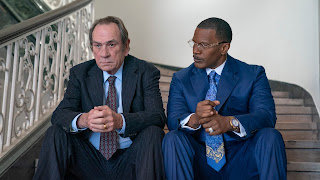Faith in Film 4, Tree of Life
Few films in America have been as polarizing as "Tree of Life." At the Cannes Film Festival, while the film won the Palm D'Orr, when it screened half the audience gave it a standing ovation and half the audience walked out.
In "Entertainment Weekly," one critic named it the Best Film of the year and was enraptured, and the other critic hated it and called it self indulgent. The answer is, this film is both. It's self indulgent and it is a beautiful work of art. Let me explain.
Film, we often forget, is an artistic medium. Films are artistic expressions of their creators — writers and directors. Not all critics or people like a painting, and not all critics or people will like a film. A film that creates die-hard fans and harsh critics has, likely, done something right.
Terrance Malick, the director and writer of "Tree of Life," is an artist. He isn't concerned with fame and critics, he's concerned with making a film that he wants to make. And, like an impressionist painter, his films lack conventional structure. That makes many viewers frustrated and uncomfortable. But if you can get past that, what you find with this film is an interesting exploration of a topic that you sense is important to Malick.
The film doesn't have a standard plot. It conveys information and ideas through voice over narration which is largely disconnected from the stunning visuals in the work. My impression is that Malick is an agnostic who is wrestling with this tension between the idea of who he thinks God is or should be and the brokenness he sees in the world. That tension pervades the story he crafts with "Tree of Life."
The writer, theologian, and apologist Francis Schaeffer had a beautiful essay on faith. He likened it to a man who is near cliff and falls, gripping on to the edge tightly. As he's hanging there, a voice calls out from the darkness below and says to let go, He will catch the man. There are two responses — the first is the man can let go, fall into the darkness, and trust he will be caught. Or, the man hanging might ask a few questions, get some answers, then decide to let go. Both are depictions of faith, and both depict the way different personalities come to faith.
Malick is that second man. He is a rational thinker. He is asking the hard questions, searching for answers. You get the sense that he wants to let go and trust he'll be caught, but he's not there yet. That's the tension that pervades "Tree of Life."
The film begins with a quote from Job 38. It is the voice of God responding to Job by saying, "Where were you when I laid the foundations of the Earth." If you consider that passage in context, you understand that it is natural for us to cry out to God during tough times, but since we can't fully understand him or his plan, we won't fully understand the context of why events happen to us. Some perceive that text as a cold response from God, however I see it more as God telling us what we should already know — He doesn't owe us answers. If you read Job to the end, you see that God blessed him after his suffering. He never gave Job easy answers, but Job received God's blessings.
The book of Job is probably the most philosophical exploration of faith in the Bible, and it makes sense that this is the text Malick would cling to for his exploration of these deeper truths. Though some incorrectly offer the sense that giving your life to Jesus means all your earthly problems and suffering will vanish, God's promise is that all our suffering serves a purpose, and leads to our hope and strength when we lean upon Him. That's what Romans 5:3-5 is all about. “Not only so, but we also glory in our sufferings, because we know that suffering produces perseverance; perseverance, character; and character, hope. And hope does not put us to shame, because God’s love has been poured out into our hearts through the Holy Spirit, who has been given to us.”
I find those words always give me comfort, especially when I consider the context in which they were written. As I’ve mentioned before, Paul wrote the letter of Romans during a time of intense suffering and persecution for Christians. Some were being burned alive, others were being fed to lions in the coliseum, yet Paul urged them to look on their sufferings as building toward the hope offered in God. The same is true for us today.




Comments
Post a Comment